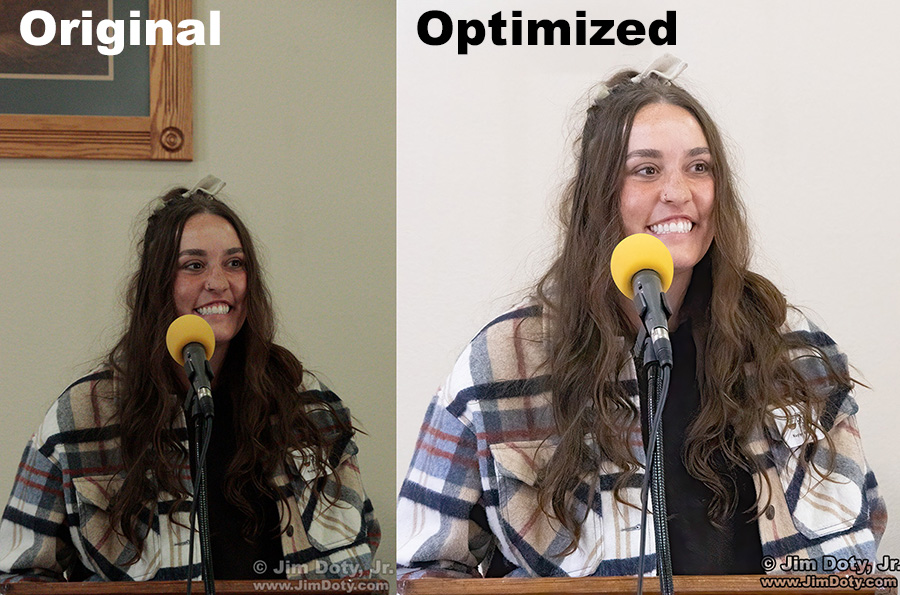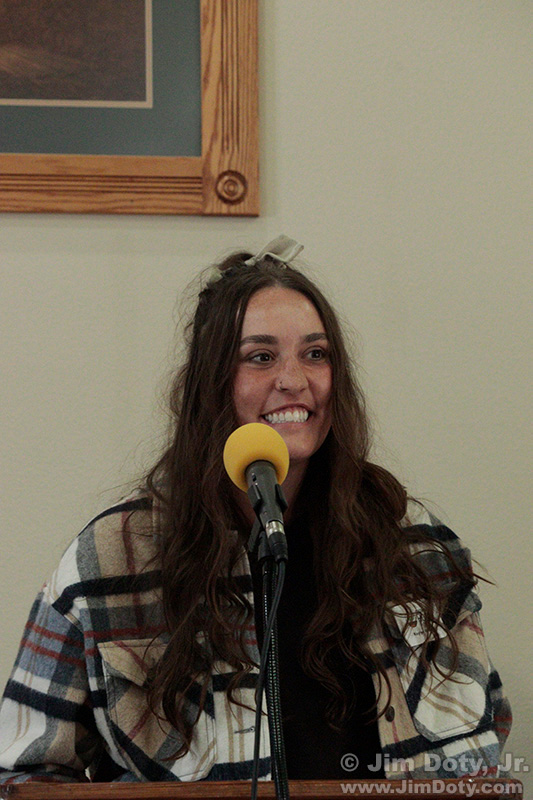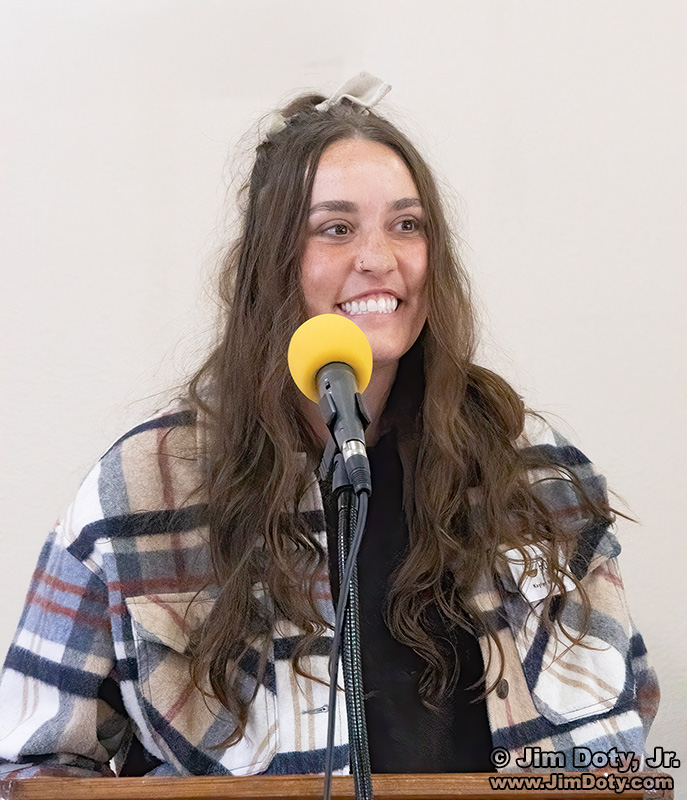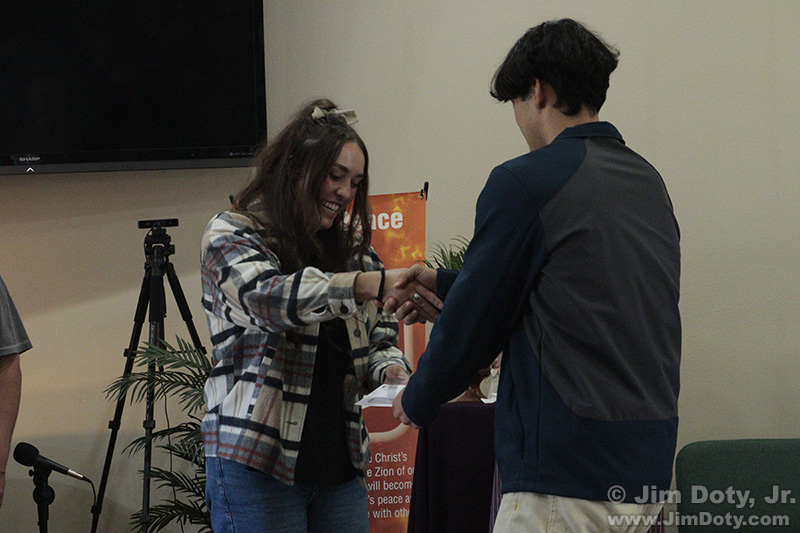Kaylyn is a regional director for Growing Hope Globally (see the third link below) and I was taking pictures of her addressing a local church group.
This is the original photo, right out of the camera and resized for the web. I color corrected the image due to the color cast of the light in the room.
Most artificial lights have a yellow, green, or yellow/green color cast of some sort. Your eyes/brain automatically compensates for the color cast (color temperature) of the lights in a room so things look normal. But your camera does not compensate, so for optimum colors you need to (1) change the white balance settings on your camera, or (2) set a custom white balance (see the second link below), or if that is not convenient, (3) do a color correction of the photos after the fact. I went with option 3.
Incidentally, smart phones try to auto-compensate for the light, with varying results, sometimes good, sometimes not so good. So smart phone photos may also need some color correction.
I opened this image in Adobe Bridge and used the Camera Raw Filter (Adobe Camera Raw) in Adobe Photoshop to color correct this photo.
This is the result. This was a simple fix that took less than 60 seconds dragging a few sliders in ACR. I also cropped the image for a more pleasing composition without the distracting corner of a painting on the wall behind her.
For a tutorial in using ACR to color correct a photo, see the first link below.
This is another right out of the camera photo.
This is the cropped and color corrected version.
Links
How To Optimize A Photo With Adobe Camera Raw
A Custom White Balance is the Key to Better, More Accurate Colors





